Watching from farm to fork: Keeping food in Singapore safe in the global era
SINGAPORE — When news of a major tainted meat scandal in Brazil emerged in March, alarm bells went off from South Africa to China and Singapore in a sign of how globalised the food supply chain has become.
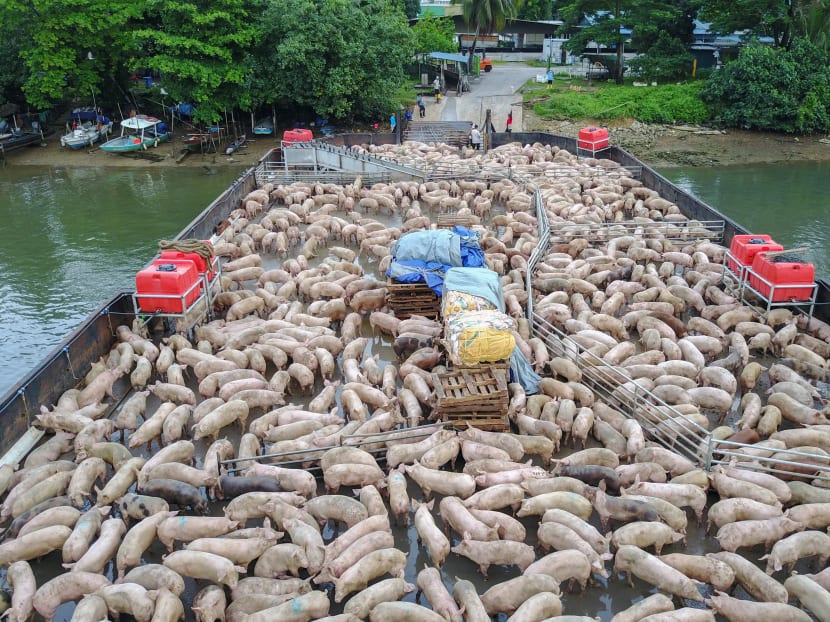
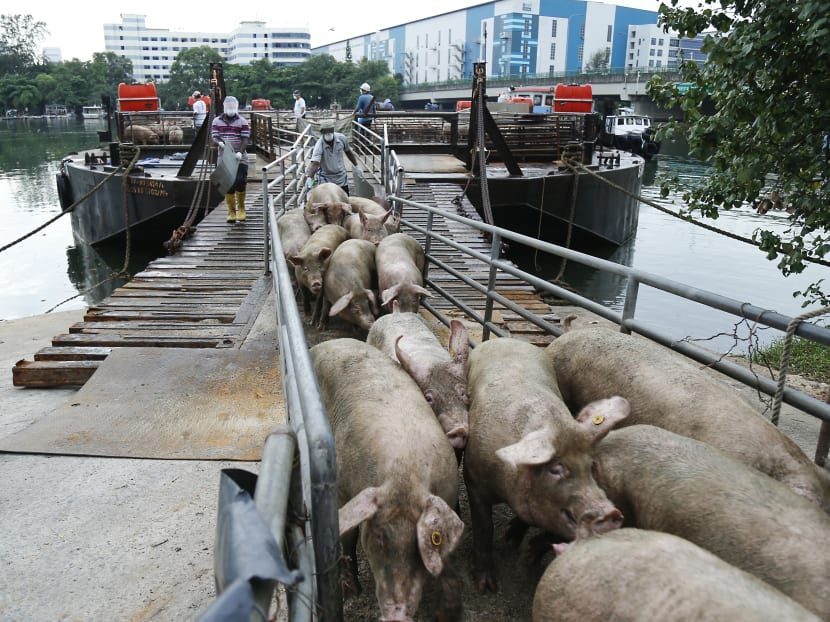
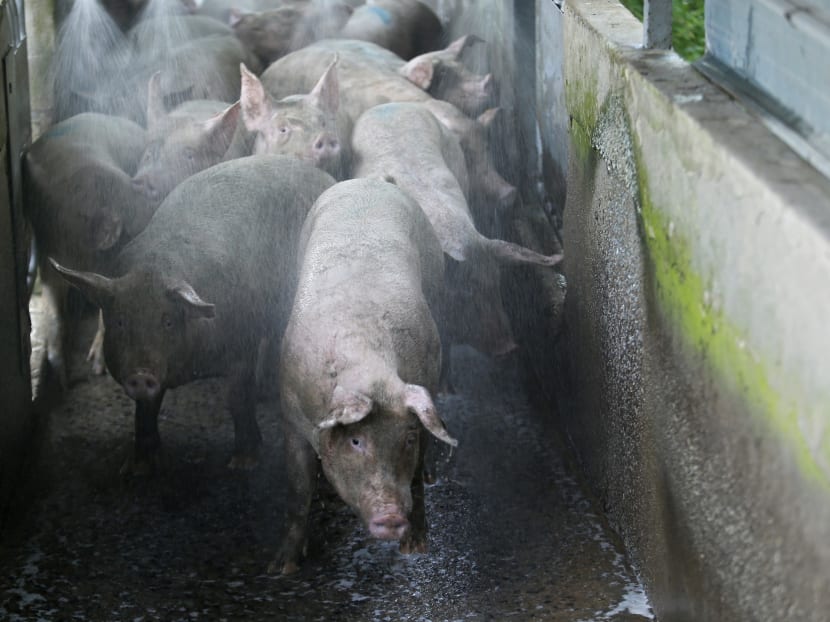
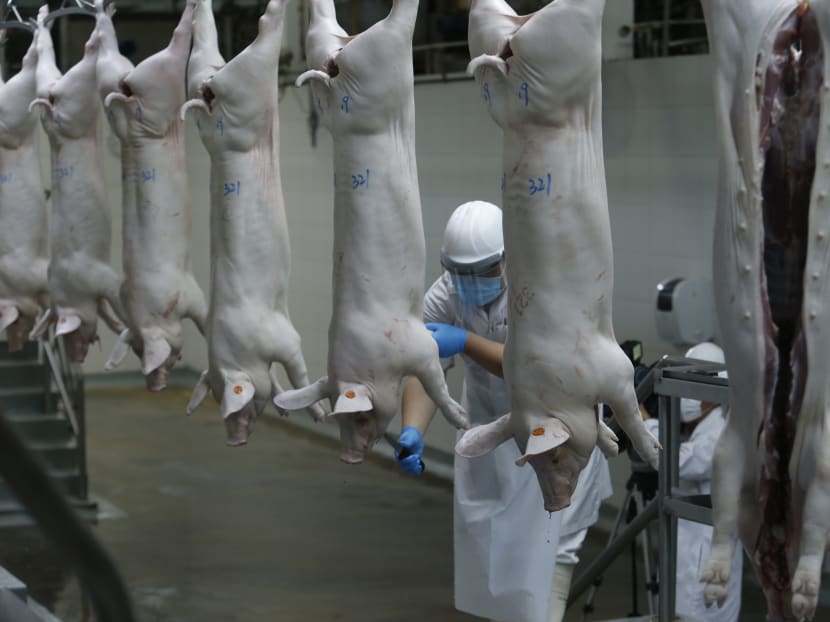
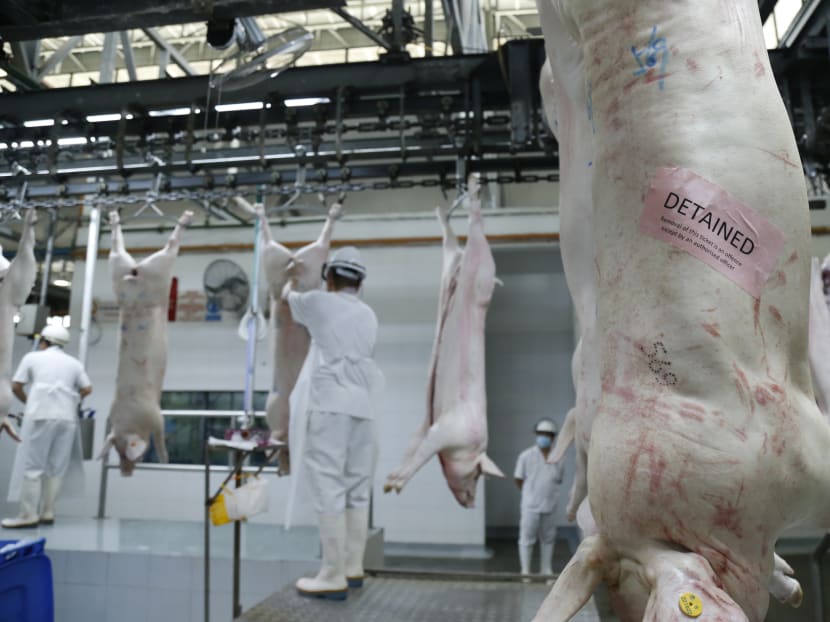
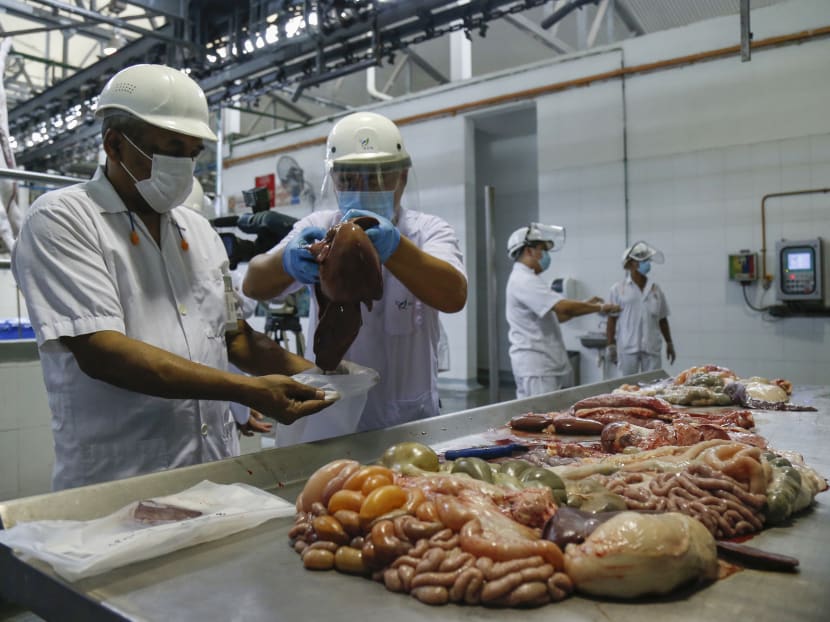
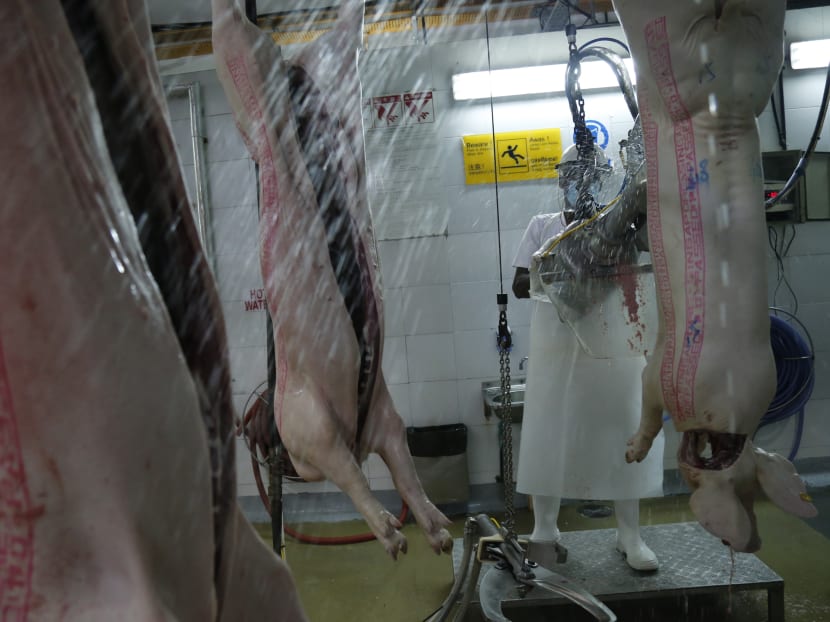
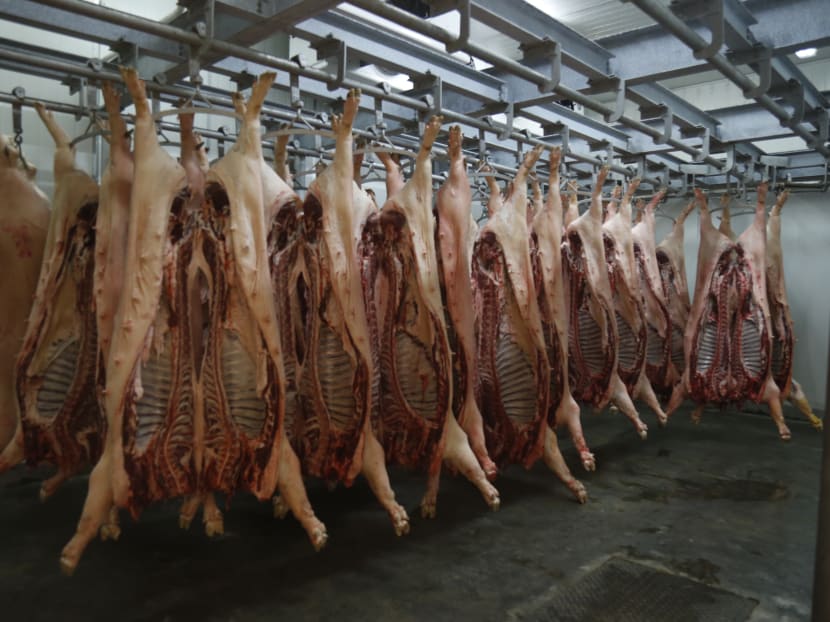
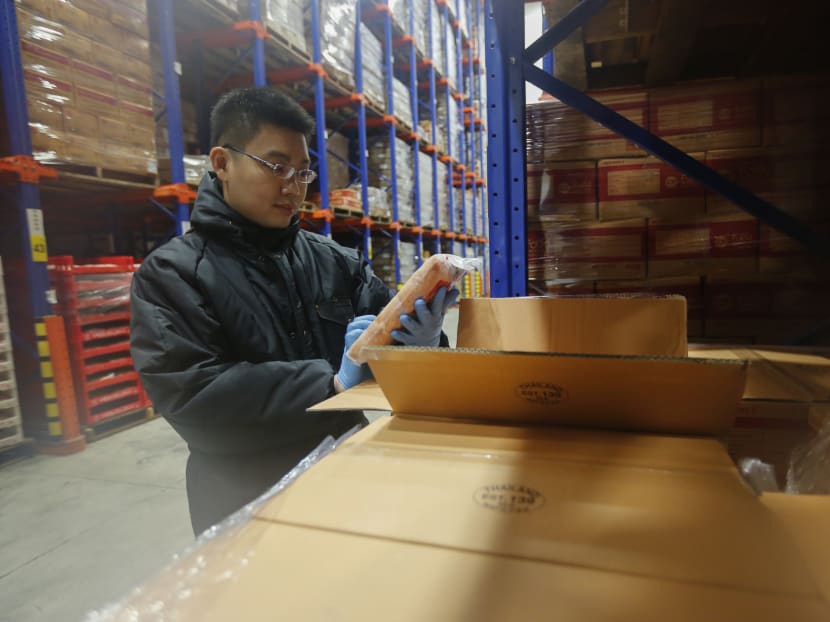
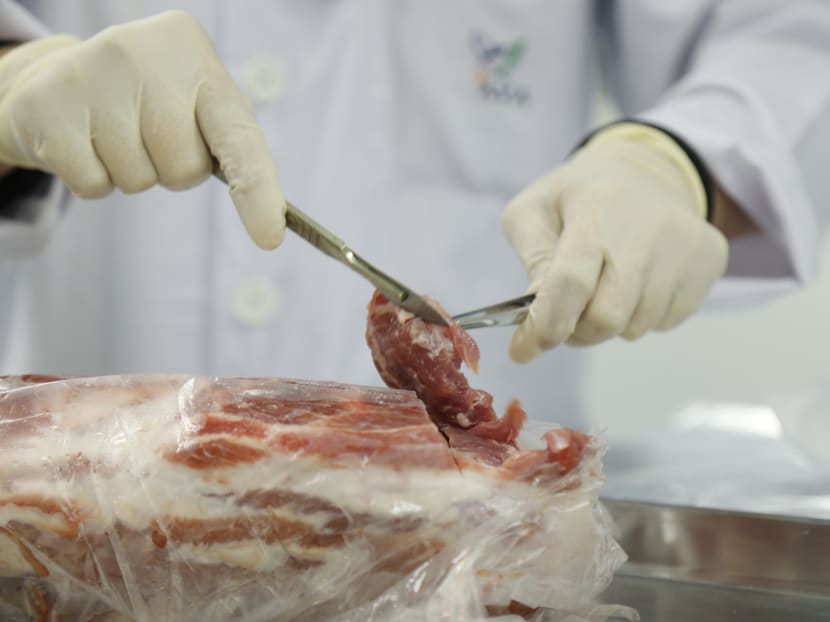
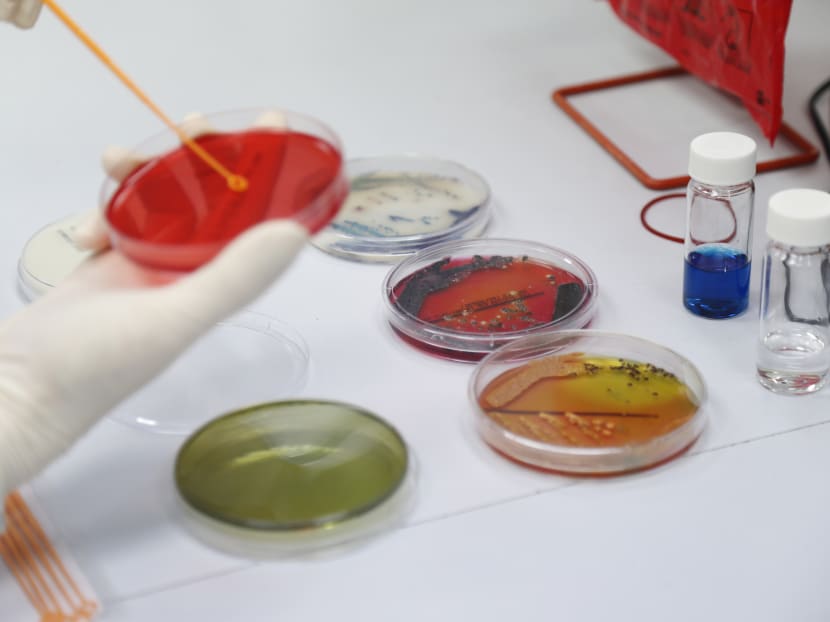
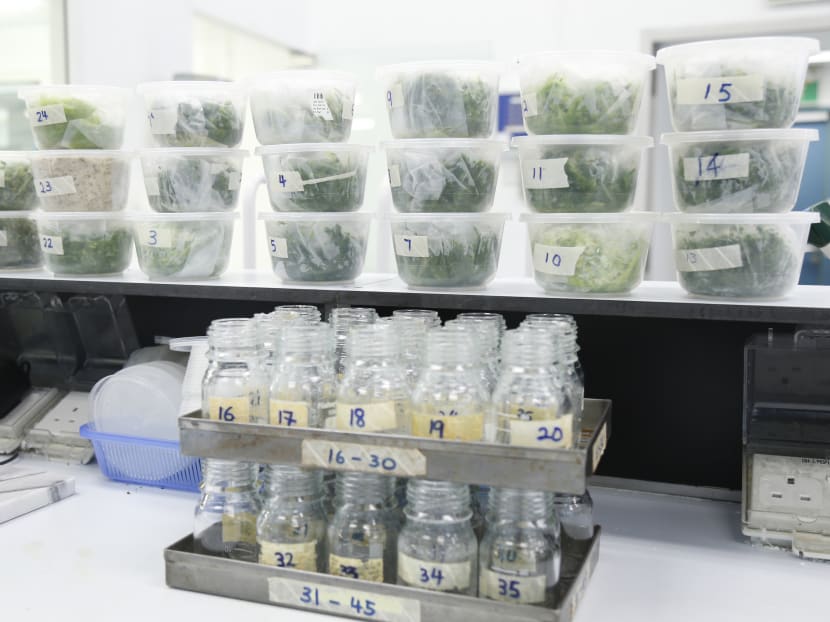
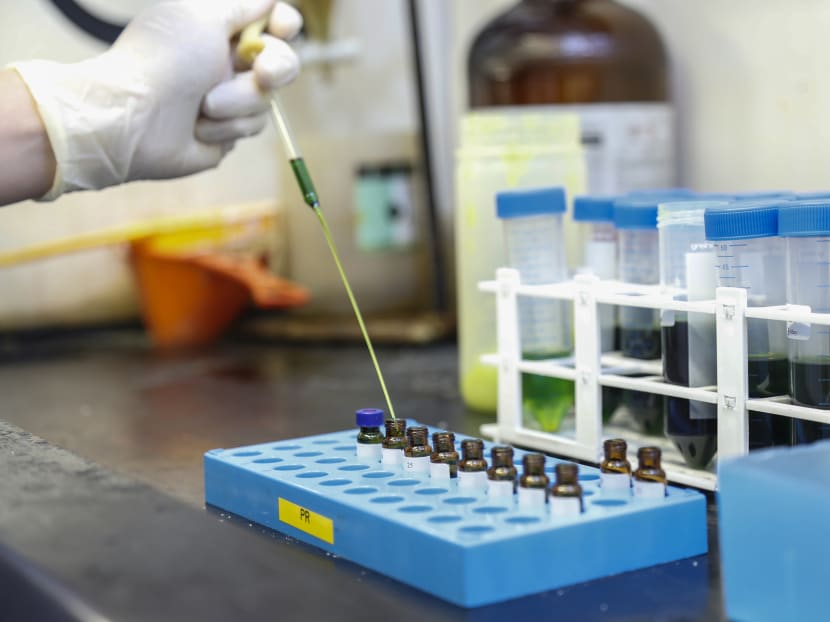
SINGAPORE — When news of a major tainted meat scandal in Brazil emerged in March, alarm bells went off from South Africa to China and Singapore in a sign of how globalised the food supply chain has become.
The South American country's powerhouse meatpacking industry exports to more than 150 countries. For Singapore, Brazil is considered a major source of supply of beef, chicken and pork despite the huge geographic distance apart.
Though the scandal involved just 21 of 4,837 meat-processing facilities in Brazil, Singapore's Agri-Food and Veterinary Authority (AVA) took no chances and brought in a higher-than-usual amount of meat samples from Brazil to its laboratories for analysis.
"We analysed all (the extra meat samples) in two to three days, on top of the regular meats we examine on a regular basis," recalled Ms Elaine Teo, a senior scientist at AVA's drug residue laboratory.
While AVA quickly established that Singapore was not affected by the Brazilian scandal involving rotten meat being sold with faked certificates, the incident underscored the complexities of managing food safety in the face of a globalised supply chain.
Land-scarce Singapore has to import most of its food. Over 90 per cent of its food over the past two years, for instance, had to be imported from some 170 countries worldwide.
AVA recently gave TODAY an inside look at its layered approach to ensuring food safety, which involves multiple risk assessments, inspections, laboratory tests, and monitoring of the numerous food types and sources of supply that enter Singapore.
GATEKEEPING
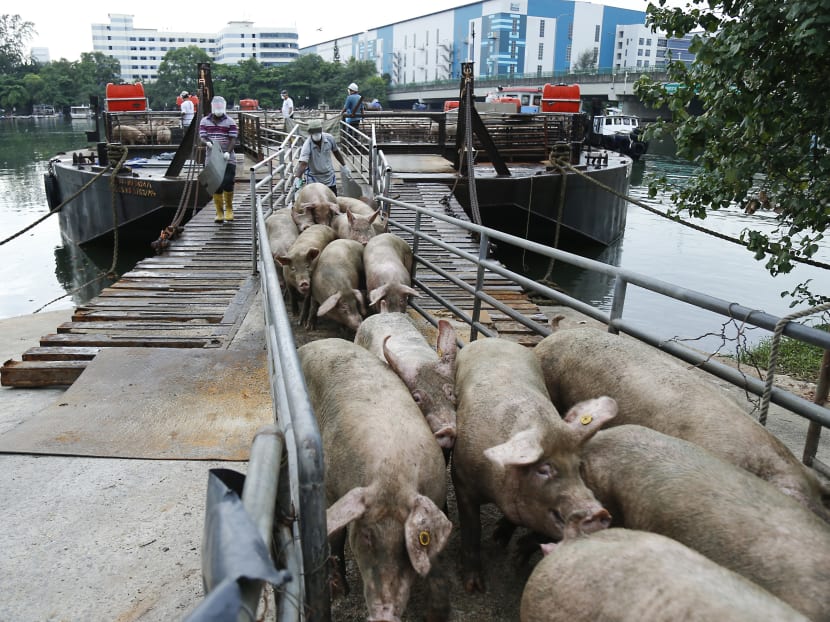
(Workers at Singapore's only pig abattoir dispatching the animals from the barge in batches. The pigs are from a farm in Bulan Island, Indonesia. Photo: Today/Najeer Yusof)
Countries that wish to export livestock, meat, and eggs to Singapore must first be accredited by the AVA.
"We look at the capabilities of the exporting country. Are they able to ensure food safety, the animals' health, and the meat products they export to Singapore?" said Mr Herman Teo, a senior executive manager at AVA's accreditation division.
He added: "We also look at their labs' diagnostic capabilities, and how they regulate farms, slaughterhouses and food factories on the ground."
AVA officials travel overseas widely and regularly to inspect their counterparts' disease surveillance and pesticides monitoring systems. Foreign commercial food factories and farms are also vetted.
An AVA team was coincidentally in Brazil to inspect one of its export establishments when the meat scandal in March broke out.
.embed-container { position: relative; padding-bottom: 56.25%; height: 0; overflow: hidden; max-width: 100%; } .embed-container iframe, .embed-container object, .embed-container embed { position: absolute; top: 0; left: 0; width: 100%; height: 100%; }Currently, over 1,000 establishments from 36 countries have been accredited to export various meat and egg products to Singapore.
"We have to ensure that their inspectors on the ground - both their veterinarians and food inspectors - are well-trained and know the symptoms of diseases. They need to have the confidence and ability to flag out deficiencies in their food factories and farms," said Mr Teo.
The AVA also works closely with the local authorities in exporting countries to ensure food safety at the source. This has led to the set up of several disease-free animal farming zones in Malaysia and China.
To keep periodic concerns like bird flu at bay, the AVA has been assisting their Indonesian counterparts in controlling and managing bird flu outbreaks in Batam and Bintan since 2006.
STRINGENT CHECKS
Once imported into Singapore, live animals and food items are subjected to strict inspection and surveillance.
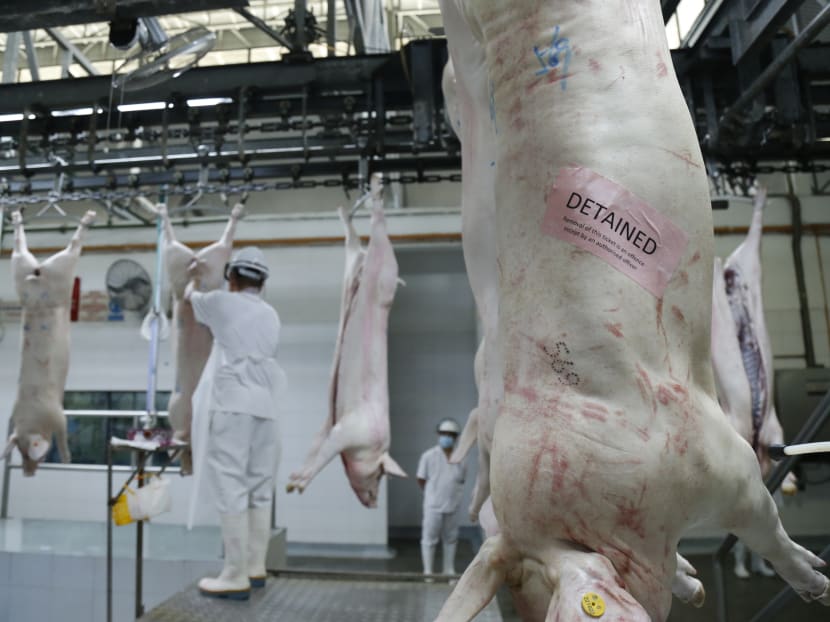
(Pigs that do not pass the visual inspection are detained for further inspection. A pink sticker with the word ‘detained’ is pasted on the meat as it is pulled away from the main line. Photo: TODAY/Najeer Yusof)
For example, three AVA inspectors, including a supervisor, are stationed at the only pig abattoir in Singapore from Saturday to Thursday to conduct visual checks on over 6,000 pigs shipped from Bulan Island, off Batam. There are no deliveries on Fridays.
As the pigs get shepherded from the barge into the abattoir, located at Buroh Lane near Jurong Port Road, the inspectors keep an eye out for anomalies on the animals' gait, body condition, and skin colour.
One inspector will then inspect the meat, while the other checks the organs.
Pigs that pass the AVA inspection are then branded with a pink mark by a staff from the commercial abattoir. Pigs that fail the inspection, which number two to three daily, are further examined by an AVA supervisor who looks out for signs like abscesses in the liver.
"If (the abscess) is localised, we just remove it. However, if the anomaly is generalised, the whole pig is condemned and we make a report," said Mr Placido Ronald Palapal, a senior executive manager at AVA's slaughterhouses surveillance section.
The condemned sample, along with other random samples, are then brought to AVA's laboratories, where they are subjected to a battery of tests for drug residues or parasites.
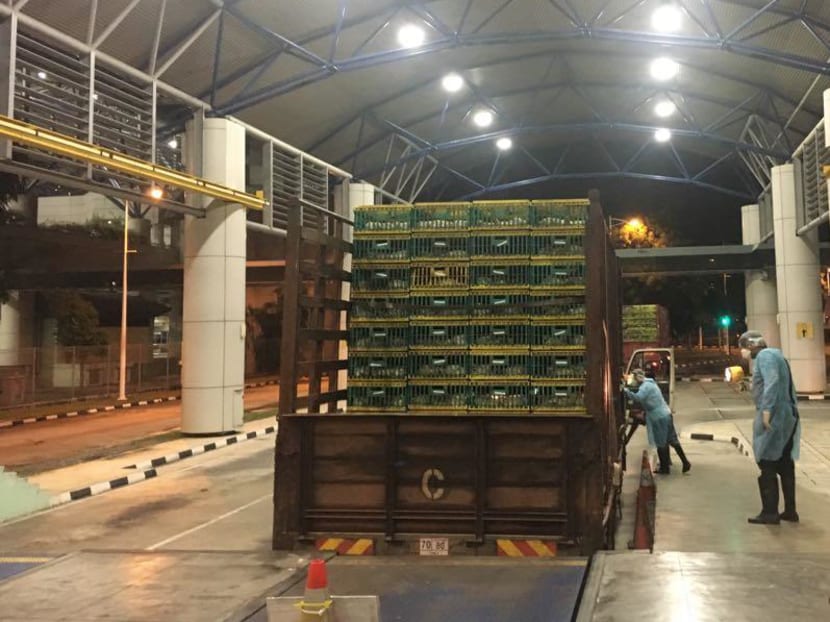
(AVA inspectors conducting visual checks on imported live poultry arriving at Tuas checkpoint. Photo: AVA)
Similar checks are also conducted for live poultry coming through the Tuas Checkpoint, and at 14 local chicken and duck slaughterhouses.
Over the past two years, some 14,000 samples from the local poultry slaughterhouses had been sent to AVA's laboratories to test for bird flu, salmonella, and other diseases.
Besides live animals like pigs and poultry, AVA also inspects frozen and chilled meat, eggs, fruits and vegetables, and high-risk food like infant milk formula.
"It is impractical to inspect and test all food options available in our market. Our inspection and surveillance programme is based on scientific risk assessment," said Dr Paul Chiew, AVA's programme chief (food safety) and group director of laboratories group.
In 2016, AVA conducted over 8,200 inspections and sampling of local farms, while about 6,900 inspections were done on food factories in the same year.
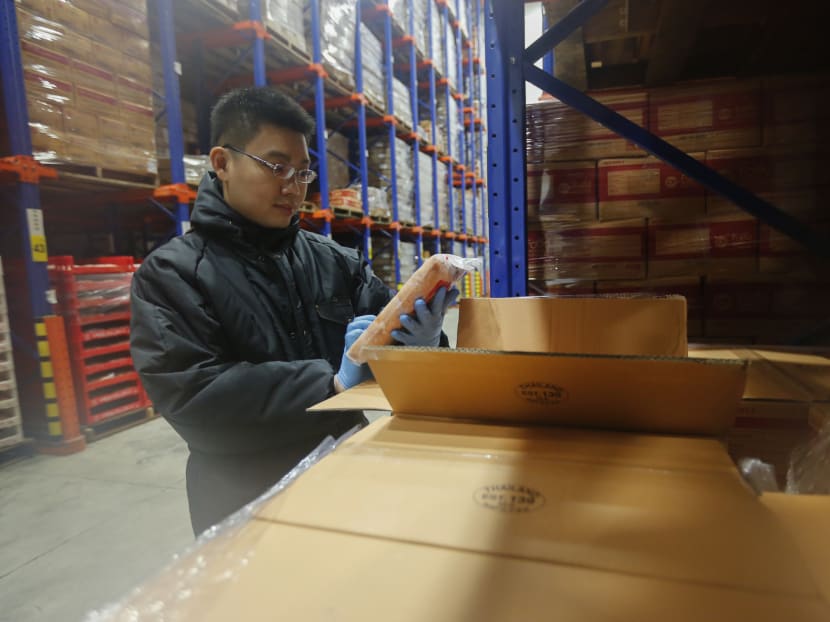
(Frozen meat being inspected at the cold store of Seo Eng Joo's warehouse. These imported meat products are inspected for abnormalities such as traces of blood and smell. The temperature of the freezer ranges from -18 to -20 degrees Celsius. Photo: TODAY/Najeer Yusof)
AVA will cull the infected animals in the event of a disease outbreak in the local farms, such as in 2015 when a poultry farm was affected by a salmonella virus outbreak.
Local poultry farms are bird-proofed to prevent contact between wild birds (that may carry viruses) and the domesticated birds.
Professor Zhou Weibiao, director of the National University of Singapore's food science and technology programme, said Singapore has one of the highest food safety and security standards in the world.
"In many cases, Singapore is better than many developed countries. Some regulations (in Singapore) are even stricter than the US or Europe," said Professor Zhou. "This is because Singapore's regulatory system is a collection of the best practices around the world."
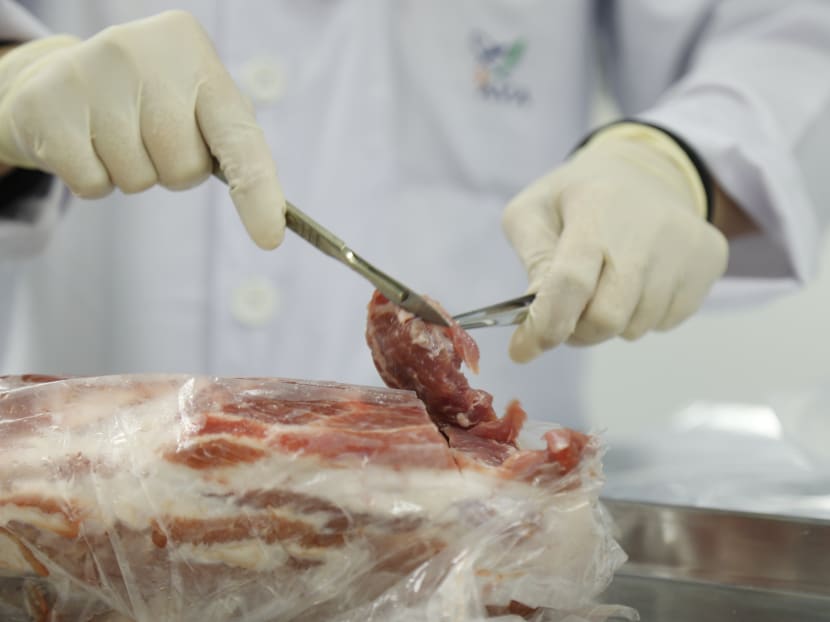
(At the drug residue laboratory, meat samples are tested for antibiotics, hormones and anti-parasitic drugs. Photo: TODAY/Najeer Yusof)
SCENARIO PLANNING
While strict, Singapore's food safety and regulatory systems are not impregnable. The country's strategic location and status as a transit hub also make it vulnerable to contagions, said Prof Zhou.
"For example, food poisoning can spread. You can't stop international travel," he added.
To that end, AVA has conducted simulation exercises to test out responses to various scenarios, such as a short-term food supply disruption.
An inter-agency crisis management structure called One Health, involving AVA, the National Environment Agency (NEA), and Ministry of Health (MOH), is also in place to respond to foodborne disease outbreaks.
One Health was activated in response to the Group B Streptococcus (GBS) bacteria outbreak in 2015 that affected raw-fish dishes, and a 2016 mass food poisoning case that affected over 100 people who consumed unclean food from a caterer.
"As food contamination can occur at any point in the food chain, it is essential for all of us to play our part in ensuring that food in Singapore is safe," Dr Chiew said. "Food safety is a shared responsibility between the government, industry, and public."






